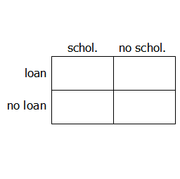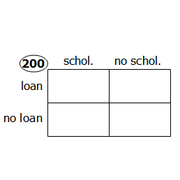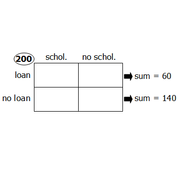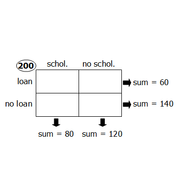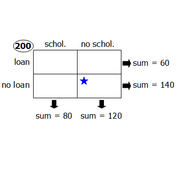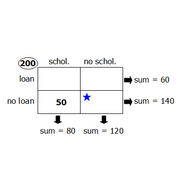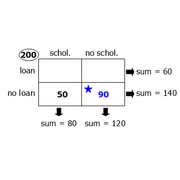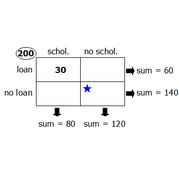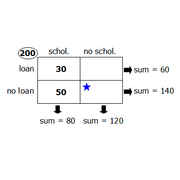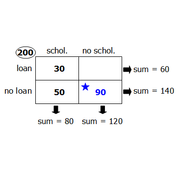Events & Promotions
|
|

GMAT Club Daily Prep
Thank you for using the timer - this advanced tool can estimate your performance and suggest more practice questions. We have subscribed you to Daily Prep Questions via email.
Customized
for You
Track
Your Progress
Practice
Pays
Not interested in getting valuable practice questions and articles delivered to your email? No problem, unsubscribe here.
- Nov 19
12:30 PM EST
-01:30 PM EST
Learn how Keshav, a Chartered Accountant, scored an impressive 705 on GMAT in just 30 days with GMATWhiz's expert guidance. In this video, he shares preparation tips and strategies that worked for him, including the mock, time management, and more - Nov 20
07:30 AM PST
-08:30 AM PST
Learn what truly sets the UC Riverside MBA apart and how it helps in your professional growth - Nov 20
01:30 PM EST
-02:30 PM IST
Learn how Kamakshi achieved a GMAT 675 with an impressive 96th %ile in Data Insights. Discover the unique methods and exam strategies that helped her excel in DI along with other sections for a balanced and high score. - Nov 22
11:00 AM IST
-01:00 PM IST
Do RC/MSR passages scare you? e-GMAT is conducting a masterclass to help you learn – Learn effective reading strategies Tackle difficult RC & MSR with confidence Excel in timed test environment - Nov 23
11:00 AM IST
-01:00 PM IST
Attend this free GMAT Algebra Webinar and learn how to master the most challenging Inequalities and Absolute Value problems with ease. - Nov 24
07:00 PM PST
-08:00 PM PST
Full-length FE mock with insightful analytics, weakness diagnosis, and video explanations! - Nov 25
10:00 AM EST
-11:00 AM EST
Prefer video-based learning? The Target Test Prep OnDemand course is a one-of-a-kind video masterclass featuring 400 hours of lecture-style teaching by Scott Woodbury-Stewart, founder of Target Test Prep and one of the most accomplished GMAT instructors.
Kudos
Bookmarks
D
Be sure to select an answer first to save it in the Error Log before revealing the correct answer (OA)!
Difficulty:
 15%
(low)
15%
(low)
Question Stats:
83% (01:59) correct 17%
(02:13)
wrong
17%
(02:13)
wrong  based on 3521
sessions
based on 3521
sessions
History
Date
Time
Result
Not Attempted Yet
In a survey of 200 college graduates, 30 percent said they had received student loans during their college careers, and 40 percent said they had received scholarships. What percent of those surveyed said that they had received neither student loans nor scholarships during their college careers?
(1) 25 percent of those surveyed said that they had received scholarships but no loans.
(2) 50 percent of those surveyed who said that they had received loans also said that they had received scholarships.
(1) 25 percent of those surveyed said that they had received scholarships but no loans.
(2) 50 percent of those surveyed who said that they had received loans also said that they had received scholarships.
Kudos
Bookmarks
In a survey of 200 college graduates, 30 percent said they had received student loans during their college careers, and 40 percent said they had received scholarships. What percent of those surveyed said that they had received neither student loans nor scholarships during their college careers?
30 percent received student loans --> 200*0.3 = 60 graduates received loans;
40 percent received scholarships --> 200*0.4 = 80 graduates received scholarships.
200 = {loans} + {scholarships} - {both} + {neither};
200 = 60 + 80 - {both} + {neither};
{neither} = 60 + {both}.
Question: {neither} = ?
As {neither} = 60 + {both} then we should calculate # of students who received both loans and scholarships.
(1) 25 percent of those surveyed said that they had received scholarships but no loans:
{scholarships} - {both} = 0.25*200;
80 - {both} = 50;
{both} = 80 - 50 = 30;
{neither} = 60 + {both} = 60 + 30 = 90.
Sufficient.
(2) 50 percent of those surveyed who said that they had received loans also said that they had received scholarships:
0.5*{loans} = {both};
0.5*60 = 30 = {both};
{neither} = 60 + {both} = 60 + 30 = 90.
Sufficient.
Answer: D.
30 percent received student loans --> 200*0.3 = 60 graduates received loans;
40 percent received scholarships --> 200*0.4 = 80 graduates received scholarships.
200 = {loans} + {scholarships} - {both} + {neither};
200 = 60 + 80 - {both} + {neither};
{neither} = 60 + {both}.
Question: {neither} = ?
As {neither} = 60 + {both} then we should calculate # of students who received both loans and scholarships.
(1) 25 percent of those surveyed said that they had received scholarships but no loans:
{scholarships} - {both} = 0.25*200;
80 - {both} = 50;
{both} = 80 - 50 = 30;
{neither} = 60 + {both} = 60 + 30 = 90.
Sufficient.
(2) 50 percent of those surveyed who said that they had received loans also said that they had received scholarships:
0.5*{loans} = {both};
0.5*60 = 30 = {both};
{neither} = 60 + {both} = 60 + 30 = 90.
Sufficient.
Answer: D.
PrashantPonde
Joined: 27 Jun 2012
Last visit: 29 Jan 2025
Posts: 321
Given Kudos: 185
Concentration: Strategy, Finance
Schools: Haas EWMBA '17
Kudos
Bookmarks
Based on the information given in the question stem we can put below information in the statistics table.
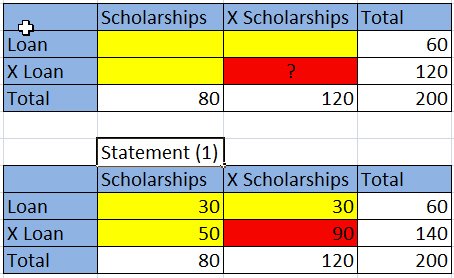
Students.jpg [ 99.12 KiB | Viewed 61098 times ]
We need to find "neither" i.e. "students with neither loans nor scholarships" - Marked in RED.
So if DS statement gives any information about the cells in YELLOW will lead you to calculated answer.
Statement(1)
SUFFICIENT: 25% (i.e. 50 students) are with scholarships but no loans. Based on this arrive at the answer "neither" = 90 (check the above image)
Statement(2)
SUFFICIENT: 50% of students with loans -> received scholarship i.e. 50% of 60 = 30 students. Based on this arrive at the answer "neither" = 90.
Hence choice(D) is the answer.
Attachment:
Students.jpg [ 99.12 KiB | Viewed 61098 times ]
We need to find "neither" i.e. "students with neither loans nor scholarships" - Marked in RED.
So if DS statement gives any information about the cells in YELLOW will lead you to calculated answer.
Statement(1)
SUFFICIENT: 25% (i.e. 50 students) are with scholarships but no loans. Based on this arrive at the answer "neither" = 90 (check the above image)
Statement(2)
SUFFICIENT: 50% of students with loans -> received scholarship i.e. 50% of 60 = 30 students. Based on this arrive at the answer "neither" = 90.
Hence choice(D) is the answer.














